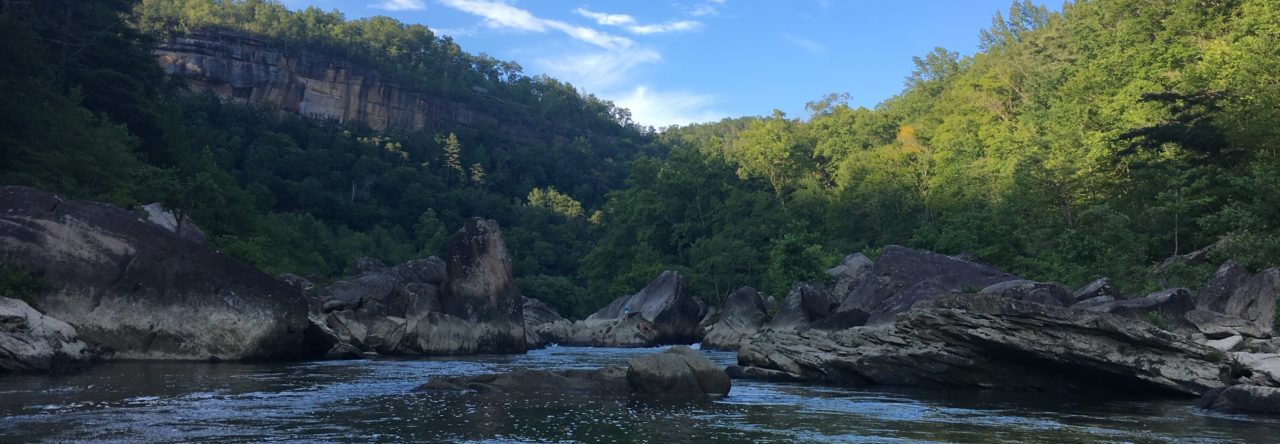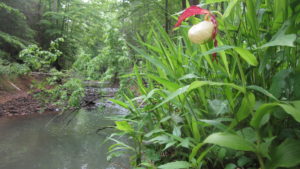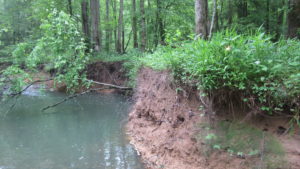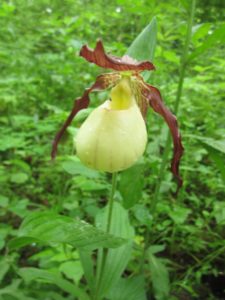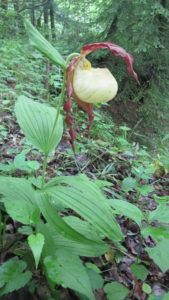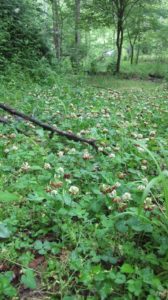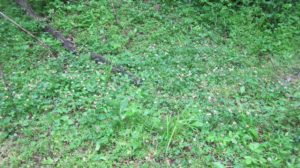Ok. A simple goal of documenting my daily chores, life and work. We’ll see how long this lasts. Today was like many days. Cleaning, organizing and random walking around the farm, Littlefield Forest. The creek was flooded and I spent time with Estella and Henry throwing sticks and small logs into the creek and then chasing and cheering our propective frontrunner through the waterfalls and log jams.
The afternoon was unusually warm so I cut wintercreeper off several trees, cut some privet and honesuckkle. Right before dark the whole family walked up to the pond and Henry and I collected some reindeer lichen for some landscaping and craft projects around the house.
It felt like a scavenger hu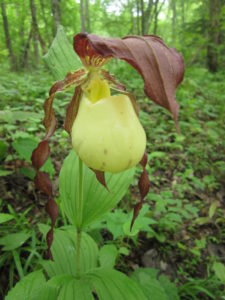 nt as I hiked for miles in search of the elusive Kentucky lady slipper (Cypripedium kentuckiense) orchid that exists along a few of the eastern Kentucky creeks. It sometimes seemed like a figment of my imagination, tucked away amongst the late May herbaceous layer that included Laportea canadensis, Lysimachia cilliata, Meehania cordata, and Viola sp. These orchids occur in just a handful of southeastern states, and until the late 1970’s it was not even known to science. In Kentucky we have a couple dozen known locations, but many of them have declined in the past few decades due to reasons such as logging, ATV’s, mining, camp development along riparian areas, browsing by deer, collection by orchid thieves, and development. There a a few protected sites, but many more are vulnerable.
nt as I hiked for miles in search of the elusive Kentucky lady slipper (Cypripedium kentuckiense) orchid that exists along a few of the eastern Kentucky creeks. It sometimes seemed like a figment of my imagination, tucked away amongst the late May herbaceous layer that included Laportea canadensis, Lysimachia cilliata, Meehania cordata, and Viola sp. These orchids occur in just a handful of southeastern states, and until the late 1970’s it was not even known to science. In Kentucky we have a couple dozen known locations, but many of them have declined in the past few decades due to reasons such as logging, ATV’s, mining, camp development along riparian areas, browsing by deer, collection by orchid thieves, and development. There a a few protected sites, but many more are vulnerable.
As I surveyed the orchids along the riparian area of this wild creek I noticed extreme cutting of the banks, and thick debris piles, evidence of powerful floods. There was even a KY lady slipper with its roots exposed, hanging on for dear life at the edge of a high cut bank that was eroding into the creek. the roots exposed. Logging and mining in the headwaters and upper slopes in this watershed had infuriated the creek, increasing water runoff into the mainstem causing it to rage through the riparian area. If we can try to protect some of remaining forested blocks and encourage regrowth in this badly scarred watershed, can the ladyslipper make a comeback?
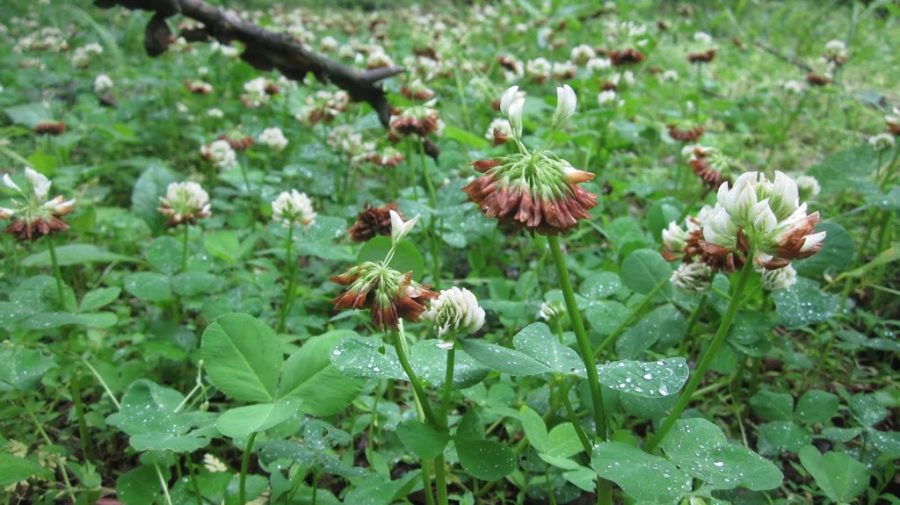
 This is my first post. I figure that is about time that I start putting all of my projects and thoughts onto paper (or computer screen) because I think it is all so fascinating, and I am sure there are others out there that will think this too.
This is my first post. I figure that is about time that I start putting all of my projects and thoughts onto paper (or computer screen) because I think it is all so fascinating, and I am sure there are others out there that will think this too.
Today I went to a running buffalo clover (Trifolium stoloniferum) site today with Deb White, a fellow botanist and good friend. This site is in Clark County, and I have been monitoring it annually for 5 years (2006-2011), typically in May. The plants occur along a small stream in the headwaters of Upper Howard’s Creek, a stones through from Boonesboro, Daniel Boones hunting grounds. It is pretty weedy, invasive plants including Japanese stilt grass, garlic mustard, bush honeysuckle, and a few other unwanted plants that are familiar in the Bluegrass. I had tryed the first few years to work on controlling the invasives, but the problem was beyond my efforts. The number of running buffalo clover plants were fluctuating year to year in ways that I didn’t understand, ranging between 100-300 rooted crowns
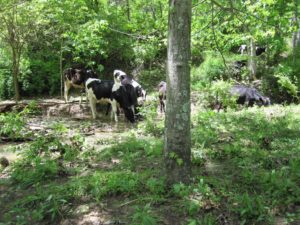 surveyed the clover plants with 8 new dairy cows, who were also quite friendly. These cows had trampled the area so much that little vegetation existed. There was lots of bare dirt. In addition, the heavy rainfall in
surveyed the clover plants with 8 new dairy cows, who were also quite friendly. These cows had trampled the area so much that little vegetation existed. There was lots of bare dirt. In addition, the heavy rainfall in 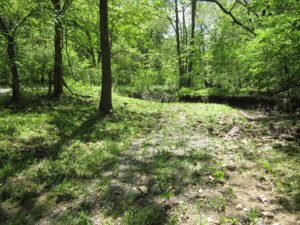 that particular area in early May 2010 had created visible scour along the banks, just where the clover plants grew. There was still lots of clover plants that were surviving the trampling and scouring of their habitat. But…
that particular area in early May 2010 had created visible scour along the banks, just where the clover plants grew. There was still lots of clover plants that were surviving the trampling and scouring of their habitat. But…This year, the plants just exploded. They quadrupled in number of rooted crowns. There were over 1000 flowers, where usually there had been 200 or less. Many runners were over 2 feet long. I have never seen a nearly solid carpet of flowering running buffalo clover in such a large area, possible over 20x 10 meters! But the invasives were evident everywhere. Young Japanese stilt grass was dominant, and chinese yam had showed up this year, a few plants scattered along the floodplain. This is the running buffalo clovers response to a year of major disturbance. A response to disturbances from floods, trampling by cattle, and competition (or lack there of?) from other plants. Perhaps I should invite the cattle back to the site at the end of the summer after the running buffalo clover flowers senesce, so the the cattle can help create a barren disturbed area for new seeds to germinate, or maybe help aid in the rooting of runners sent out by individual plants. Well see what happens next year…
